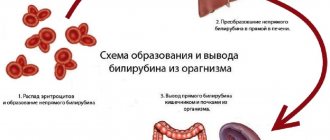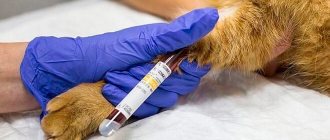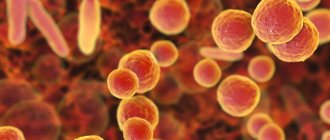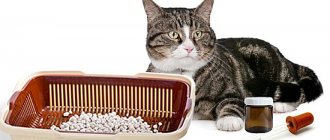If you regularly read articles about health problems in pets, as well as methods of treating them, you probably constantly see lines that mention blood tests. In cats, this diagnostic method can be used for almost all types of infectious and invasive diseases. What parameters of this analysis does the veterinarian look at? And what can be understood from it? Let's find out.
Why is a blood test so important?
In recent years, many breeders do not want to spend a lot of money buying special food for their pets. They replace them with “natural”. Unfortunately, not all cat owners consult professional veterinarians when preparing a new diet. Research shows that in 95% of cases, self-selected food does not meet the cat’s needs at all. Unfortunately, the consequences of this approach are not immediately apparent. A biochemical blood test in cats can prevent trouble.
And we're only talking about biochemistry! A simple blood test, which can be done in a regular clinic, cannot provide such data. However, an experienced (very experienced) specialist will conclude that there is a lack of iron or cyanocobalamin, seeing signs of this under a microscope. But there are few of them.
Within the framework of this article I would like to dwell on something really specific. Almost everyone knows that white blood cells increase with any inflammatory reaction, the level of red blood cells decreases with anemia, etc. But even specialists often have to guess about something more complex, since the only indicator they can focus on is a clinical blood test in cats. A lot depends on the accuracy of his interpretation.
Important! You must take your animal to the clinic on an empty stomach! A mass of leukocytes will almost certainly be found in the blood of an overeating cat, which will give reason to suspect the presence of a serious inflammatory process. You will spend a lot of energy and nerves until it turns out that your pet’s health is fine.
In addition, in the same case, a high content of eosinophils can be detected, which actually happens with worms. Of course, deworming is a good thing, but you shouldn’t just stuff your cat with medicine. Remember this!
Indicators of blood tests obtained and their characteristics
Each indicator of a blood test shows the functioning of individual organs or entire systems, while the veterinarian takes into account not only each data separately, but also the relationship to each other.
Hematocrit is a conditional indicator showing the ratio of all formed elements of blood to its volume, i.e. determines the thickness of blood. Shows how much blood can carry oxygen.
Hemoglobin is a protein contained in red blood cells that ensures the movement of oxygen and carbon dioxide throughout the animal’s body.
The average concentration of hemoglobin in an erythrocyte shows in percentage terms how much erythrocytes are saturated with hemoglobin.
The color (color) blood index shows how much hemoglobin is contained in red blood cells in relation to the normal value.
ESR is an indicator that determines the presence of an inflammatory process in the body.
Erythrocytes are red blood cells that take part in tissue gas exchange and maintaining acid-base balance. It’s bad when test results go beyond the norm, not only in the direction of decrease, but also of increase.
Leukocytes (white blood cells) - indicate the state of the animal’s immune system. Leukocytes include lymphocytes, neutrophils, monocytes, basophils and eosinophils. For a veterinarian, the relationship between these cells is of diagnostic importance.
- Neutrophils are responsible for destroying bacteria in the blood.
- lymphocytes - speak of a general indicator of immunity.
- monocytes - perform the function of destroying foreign substances in the blood,
- caught in the blood.
- eosinophils - perform the function of fighting allergens.
- basophils - together with other leukocytes, help the body recognize and identify foreign particles that have entered the blood.
Platelets are blood cells responsible for blood clotting. In addition to this function, they are responsible for the integrity of blood vessels. Both high and low levels of them are dangerous for the body.
Myelocytes are located in the bone marrow and normally should not be in the blood.
Liver
- Aspartate aminotransferase (AST). An increase in it very clearly indicates serious problems with the cat’s liver. In this case, timely blood biochemistry in cats can save the animal’s life. Or at least seriously extend it.
- ALKP (alkaline phosphatase). An increase may indicate stagnation of bile or other problems with the gallbladder. Cushing's disease manifests itself in a similar way. But the reasons do not always have a pathological basis. In kittens and young animals whose bones are growing rapidly, alkaline phosphatase levels may also be elevated. A similar effect is sometimes observed in animals that are recovering from serious fractures.
- GGT (GGT – gamma-glutamyltransferase). Its increase also indicates problems with the biliary tract, so decoding a blood test in cats helps to detect even the appearance of opisthorchid in a cat long before the appearance of parasite eggs in the feces.
- ALB (albumin). The higher its volume, the greater the likelihood of dehydration. A decrease indicates poor liver function; a similar effect may be due to blood loss, gastrointestinal disease or kidney pathology.
- TBIL (total bilirubin). Its increase is often associated with diseases of the biliary tract, and certain types of anemia also lead to it; its volume fraction often increases with hepatitis.
- Bile acids. The more of them, the worse the liver works, the greater the likelihood of impaired blood flow in it, or the presence of some problems with the biliary tract.
Causes of elevated alkaline phosphatase in cats
1. Cholestasis is the first cause of elevated alkaline phosphatase in cats. This is a disruption of the liver and gallbladder.
2. Hyperparathyroidism is a pathology of the thyroid gland in which it produces an excess amount of hormones.
3. Hereditary factor. A tendency to liver or thyroid diseases can be passed on from parents to the next generation.
4. Chronic or acute liver diseases, such as hepatitis, cirrhosis, tissue necrosis or cancer.
5. Alkaline phosphatase in cats may increase due to tuberculosis.
6. Diseases of the musculoskeletal system, for example, bone cancer.
7. Some medications also increase alkaline phosphatase in cats.
Alkaline phosphatase is an active enzyme that helps a healthy animal with digestion. Likewise, it maintains the stability of processes in bone tissue. Moreover, alkaline phosphatase cannot exist in a free form, but only in combination with hepatocyte microsomes. It is present in small amounts in most organs of the animal.
But what if alkaline phosphatase is elevated in a cat and what does this mean for the pet? Let's try to figure it out below.
Pancreas
- AMYL (amylase). An increase in its mass fraction is associated with pancreatitis, kidney disease, gastrointestinal pathology, or the prescription of certain medications. It is the amylase level that helps determine the presence of pancreatitis in the earliest stages. What else can a general blood test show in cats?
- Lipase. An increase may also be due to pancreatitis, kidney disease, gastrointestinal pathology, or side effects of drug treatment. Determining the volume fraction of this component also helps to identify inflammation of the pancreas at its earliest stages.
Changes in protein levels
- TP (total protein). An increase in its amount indicates dehydration or an inflammatory disease. Its content decreases with abnormal liver function, blood loss, gastrointestinal pathology or kidney disease (possibly with urolithiasis).
- ALB (albumin). An increase also indicates the presence of dehydration. In principle, everything is similar to the above point, since its decrease is observed in the same pathologies: liver disease, hemorrhages, pathological conditions of the excretory system. To identify what other factors is blood taken for analysis?
- GLOB (globulin). Its increase indicates the presence of an inflammatory reaction. This is almost always detected in chronic diseases, even if clinical manifestations of these pathologies may not be observed. The amount of globulin decreases after serious bleeding, gastrointestinal infections, autoimmune diseases and other problems with the body’s defense system (in particular, leukemia).
Elevated albumin levels
If albumin is elevated in cats, this indicates dehydration and significant loss of fluid from the body as a whole.
Reasons why the relative amount of albumin in the blood may be higher than normal:
- dehydration (severe dehydration);
- an error made during analysis.
© shutterstock
Hyperalbuminemia - when a cat has elevated albumin in the blood, as a rule, an increase in the absolute content of these proteins is not observed.
Electrolytes
- Sodium. The volume of this element increases greatly with dehydration. Its level decreases with severe diarrhea, vomiting, or in connection with Addison's disease and other kidney pathologies.
- Potassium. An increase in its content is observed in inflammatory kidney infections, Addison's disease, dehydration and urinary tract obstruction. Indicators decrease if the cat suffers from diarrhea and/or vomiting.
- Chlorides. Their number increases with severe dehydration of the body; a decrease is noted with gastrointestinal diseases.
The “advantage” of these components is that even the simplest blood test at home can provide information about the content of all of the above substances in plasma. For kittens, this analysis can be vitally important, since dehydration in them begins quickly and leads to the development of severe consequences.
What are albumins
The main blood protein produced in the cat's liver is called albumin. Such proteins are classified into a group of protein fractions; fluctuations in the proportions of their content in the pet’s blood indicate existing pathologies in the pet’s body.
© shutterstock
Albumin is very important for cats, as it provides many vital functions.:
- maintaining normal blood osmotic pressure;
- transportation of useful elements;
- maintaining the reserve of amino acids in the body.
Normally, plasma albumin concentration should be in the range from 24 to 42 g/l. Albumin accounts for 38-55% of the total protein. Albumin is produced in the liver at approximately 15 g per 24 hours; half the amount of this protein breaks down within 17 days.
Other items
- Glucose. The higher it is, the higher the likelihood of detecting diabetes. Its volume decreases in liver diseases and pancreas diseases. All changes in the level of this substance in the blood are extremely dangerous and can lead to sudden coma and even death. If the doctor identifies something wrong with the glucose levels, the animal needs to be treated immediately.
- Cholesterol. Diabetes mellitus, hypothyroidism, Cushing's disease, pancreatitis and some kidney diseases can contribute to its increase. Its level decreases in many gastrointestinal diseases.
- TRIG (triglycerides). Their increased content may indicate that the animal was not kept on a starvation diet before donating blood; very often (due to the characteristics of metabolism) this effect is observed in dwarf schnauzers and pinzers. Sometimes indicates pancreatitis, diabetes, Cushing's disease or hypothyroidism.
How is biochemical analysis done?
Our mustachioed friends are all very different: some are calm and docile, others have the character of a real predator, immediately releasing his claws, especially if one of the strangers encroaches on his feline personality.
The blood sampling procedure is unlikely to bring pleasure to such a purring person.
To reduce stress for the animal and make the veterinarian’s work easier, you should prepare for this event in advance, otherwise you will have to repeat this difficult path several times.
Steps to make blood collection easier:
- Hunger strike - stop feeding your pet at least six hours, or better yet, a day before the test. Then from the very first time you will be able to find out the real composition of the blood, which is not affected by digestive processes. This step is especially important for those who feed their cat natural food.
- Write down all your observations and concerns that led you to do a blood test on a separate sheet of paper while at home so you don't miss anything during your conversation with your veterinarian. No matter how experienced the professional, no one knows your cat's habits better than you.
- Introduction and examination - try to make your cat feel calm. Introduce her to the doctor, be close to her. Describe your pet's character in advance, especially if he is obstinate. The more detailed your story is, the faster the veterinarian will be able to make a preliminary diagnosis. This information will be very useful in deciphering the test results.
- The blood collection procedure requires special skills, so strictly follow all the doctor’s instructions, and do not think about how painful it will be for your cat. Don't argue, but cooperate with your veterinarian.
- The blood has been donated for analysis, it’s time to reward your kitty for her courage. How to do this - you know better than anyone!
A few words about the analysis itself
So that your kitty does not suffer in vain, you need to take care of the quality of the biochemical blood test itself. Of course, you don't need to be an expert, just keep the following tips in mind and make sure they are followed in the clinic:
- specify where the laboratory is located and when your tests will arrive there, since the reliability of the results depends on the delivery time;
- To prevent the blood from clotting and its components from being destroyed before the analysis begins, an anticoagulant must first be placed in the test tube;
- biochemical analysis is done using an IDEXX automatic analyzer, which processes blood taken only from the vein of the animal.
Decoding the results
The blood was collected, the analysis was carried out, and the results were given to you. And here the most difficult task begins.
You are holding in your hands a piece of paper that lists incomprehensible words, opposite them there are some numbers and no explanations in simple, human language.
Only a professional veterinarian can give you these explanations, preferably the one who gave you the referral and made a preliminary diagnosis of your pet.
For the general development and better care of your pet, you can get some idea of what exactly can be learned from the composition of the blood, which is incredibly complex and rich in all sorts of elements. An analysis of some of them is given in the table.
| Analyzed organ | Analyzed indicators | Possible diseases |
| Kidneys | Urea nitrogen (BUN) | dysfunction, dehydration, swelling, excess protein foods, heart disease |
| Calcium | inflammatory processes in the kidneys, sometimes caused by cancerous tumors | |
| Phosphorus | serious kidney disease | |
| Creatinine (CREA) | any kidney disease leads to an increase in this indicator | |
| Liver | Bile acids | Their high presence in the blood indicates poor liver function. |
| Albumen | Exceeding the norm indicates dehydration | |
| Total bilirubin (TBIL) | Stagnation of bile, various anemias, hepatitis - all this causes an increase in this indicator above normal | |
| AST | its increase is the first sign of serious, sometimes fatal liver disease | |
| GGT | increase - problems with the biliary tract, a symptom of parasite poisoning | |
| Alkaline phosphatase (ALKP) | stagnation of bile, dysfunction of the gallbladder lead to an increase in this indicator | |
| Pancreas | Lipase | an increase in these indicators is the most obvious sign of the early stage of pancreatitis |
| Amylase |
The indicators listed in the table reflect only the smallest part of the information that experienced veterinarians obtain using the results of a biochemical analysis of the blood of cats.
The method of grouping indicators by specific organs that are suspected (described in the table above) is not often used.
It is practiced by the most experienced specialists who only want to confirm an already made preliminary diagnosis using a blood test.
Basically, many veterinarians first receive the results of a full detailed analysis, based on the data from which they are already trying to understand what kind of disease your pet has. With this approach, the following indicators are usually studied:
- types of proteinograms;
- protein levels and interactions;
- glucose;
- electrolytes, especially potassium, chlorides and sodium;
- cholesterol and its interaction with triglycerides;
- enzymes, especially ALT;
- globulin fractions;
- inorganic substances, including magnesium and iron, in addition to the essential calcium and phosphorus.
All these indicators not only need to be analyzed in quantitative terms (above or below the norm), but it is also important to be able to see how this or that pathology affected the behavior of the companion element. A classic example of such an interaction is the inverse relationship between the enzymes AST and ALT.











